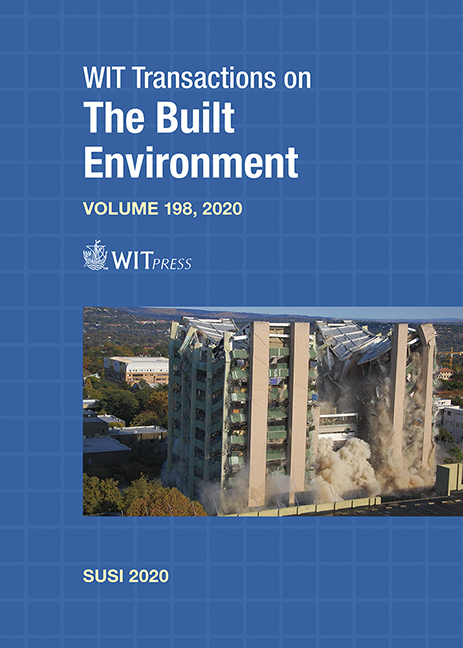INVESTIGATION ON THE POST-PROCESSING OF BLAST LOADING CHARACTERISTICS ALONG A CONVEX STRUCTURE
Price
Free (open access)
Transaction
Volume
198
Pages
12
Page Range
41 - 52
Published
2020
Paper DOI
10.2495/SUSI200041
Copyright
WIT Press
Author(s)
MICHEL-OLIVIER STURTZER, SOPHIE TRÉLAT, LAURENT SINNIGER
Abstract
Interaction between large blast and targets can rarely be studied directly, due to cost and practicality considerations. Blast tests using reduced-scale high explosive charges represent an attractive alternative. The first necessary step consists in studying blast propagation in free-field at the considered reduced-scales. The second step focuses on the determination of the blast load around various types of reference obstacles, in order to provide a critical input for numerical simulation. This approach also aims to build simplified models allowing faster risk assessment processes for government agencies. Since 2017, the French Institute for Radiological Protection and Nuclear Safety (IRSN) and the French- German Research Institute of Saint-Louis (ISL) have been studying blast propagation in free-field and in front of a hemi-cylinder at two different reduced scales using Hexomax® charges. IRSN developed a significant experience on hemispherical blast effect assessment using 42 g reference Hexomax® charges detonated in contact to a planar surface supporting a hemi-cylindrical obstacle, both equipped with pressure sensors including two types of technologies: piezo-electric and piezo-resistive. Based on this experience, ISL developed its own outdoor blastpad: 333 g Hexomax® charges are detonated in a factor two up-scaled version of the IRSN test configuration. Similar sensors are flush-mounted on the pad and the surface of an up-scaled version of the IRSN obstacle. To assess the resulting experiments extensibility, blast characteristics were measured at distances ranging between 0.6 and 3.5 m/kg1/3 from the different charges with or without obstacle. A classic post-processing methodology identified in the literature was applied to determine all peak overpressure values. The results were consequently compared to the directly determined values in order to propose a unified technique of processing overpressure data for reduced-scale blast tests, including various types of pressure sensors. Finally, this work contributes to the optimization of large scale blast tests designed to evaluate structural response.
Keywords
blast wave, hemi-cylindrical structure, detonation, plastic explosives, reduced-scale charges, effects on infrastructures, experiments, convex, pressure gauges





